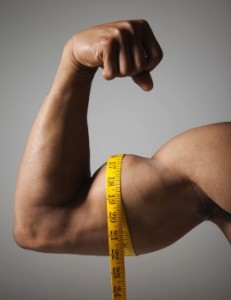
The Weigh Scale Not Reliable Enough
The times that you weigh yourself can be the most stressful part of the month because of that number.
That number on the scale can determine the next action steps you will take (and most likely affect your mood for the rest of the week).
Is all this anxiety about your weight really worth it? With obesity becoming a growing epidemic over the past few decades, weight management is what most medical professionals, trainers, and educators generally focus on.
The weight scale gives us a ballpark figure to see whether our weight is in proportion to our height, but it doesn’t show the fatty tissue deposits and/or lean muscle growth.
Neither does it indicate the areas where fat is coming off or the areas where lean muscle tissue is growing.
Because the weight scale can’t display any of this information, the weight scale really isn’t all that important. The cheapest and best tool you could use for weight management is an old fashioned tape measure.
In this article, I’ll go over how to properly use the tape measure for keeping your body in shape whether you’re gaining or losing weight.
How to Use a Tape Measure for Body Parts
The main thing to remember when it comes to making tape measurements is consistency. You want everything to be as consistent as the last time you recorded it.
If not, the numbers you record will be just as vague and worthless as the weight scale (see Why You Don’t Need The Weight Scale).
The time of day and the placement of the tape has to the same each time you measure so that your measurements will be the most accurate.
If you measure during different times of the day, your recordings will be miscalculated because of how often your weight fluctuates in the day.
Exercising before recording measurements should be avoided because of the change in muscle volume from your workout.
When we lift weights, extra blood is being sent to the muscles to help facilitate the exchange of nutrients and waste material during exercise. If you’re going to record anyway, make sure you’re consistently measuring when you have a pump or before you workout.
Your measurements with the tape measure should be over the belly of the muscle with a firm, taut slack on the tape. Measurements are more accurate in this region as muscle growth occurs at the center of the muscle first.
The Wrap Up
Tape measurements are more accurate than the scale because we can see what specific body parts are actually changing. For best accuracy, use a tight, slightly loose wrap of the tape over the muscle belly, or largest part of the muscle. Last but not least, record all your measurements week after week to stay on track for fat loss or muscle gain.
